
Winter heathers: the 5 most beautiful pink varieties
Our selection that brightens up winter, for cultivation in open ground or in pots
Contents
Winter-flowering heathers bring a particularly welcome touch of light during a time when the garden has lost its vibrancy. Their evergreen foliage even in the cold season is an additional asset for the garden.
Among the various colours offered by the lovely bells of heathers, pink is certainly the most common. It comes in subtle shades, from the lightest to the darkest, from pastel pink to bright pink.
Discover our selection of the best pink winter heathers.
Additionally, follow all our tips for successfully growing heather with our article: Heathers: planting, pruning, and maintaining.
Winter heather ‘Darley Dale’: a beautiful floribundity
The winter-flowering heather Erica darleyensis ‘Darley Dale’ brightens the garden between October-November and March-April, depending on the climate. The shrub is adorned with a multitude of small bells, in soft shades of pale pink or lilac pink, sometimes tinged with white.
The young foliage is initially cream in spring, before turning dark green at ripeness.
This old variety of heather, dating back to 1900, remains a classic thanks to its many qualities: ease of cultivation, vigour, floribundity, cold resistance, and tolerance to calcareous soils.
It will find its place in all gardens, thanks to its small spreading silhouette measuring approximately 60-70 cm in width and 40-50 cm in height. Place it, for example, in a planter to instantly brighten up a windowsill, balcony, or terrace.
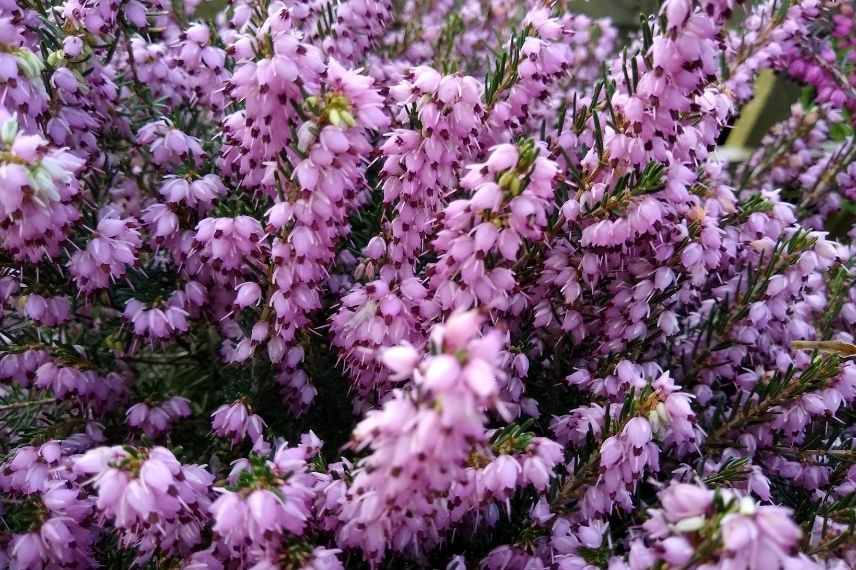
Erica darleyensis ‘Darley Dale’
Read also
Heathers: planting, pruning and careWinter heather ‘Winter Belles Lucie’: large pink bells
The heather Erica (x) darleyensis ‘Winter Belles Lucie’ forms an adorable compact cushion about sixty centimetres in all directions.
A little later than other winter heathers, it blooms between December and March. It reveals beautiful bells of an intense magenta pink, with almost purplish hues. Their uniqueness lies in their size: the ‘Winter Belles’ heathers produce indeed gongs almost twice as large as classic varieties, from which small brown stamens protrude. The urn-shaped flowers measure 7 mm in length and 4 mm in width and are gathered in clusters that almost cover the branches.
Like all heathers, its foliage is evergreen, decorative all year round. It features a charming evolving colour, changing from dark green to a coppery bronze hue under the effect of winter cold.
Hardy down to -15°C and easy to grow, it even received an award in England in 2011 for its garden performance and lifespan (between 10 and 15 years). Slip its small rounded silhouette into a pot or at the forefront of a heather soil border.

Erica (x) darleyensis ‘Winter Belles Lucie’
Discover other Heathers
View all →Available in 0 sizes
Available in 0 sizes
Available in 0 sizes
Available in 1 sizes
Available in 3 sizes
Available in 2 sizes
Available in 2 sizes
Available in 3 sizes
Available in 2 sizes
Available in 1 sizes
Winter heather ‘Ghost Hills’: flowers and foliage with evolving colours
Heather Erica darleyensis ‘Ghost Hills’ is a variety that never gets old: it features a changing colour throughout the seasons, thus renewing the spectacle in the garden.
Winter flowering occurs between December and March-April, depending on the climate. Our shrub then adorns itself with small bells that are initially pink, turning pale mauve with a hint of violet. A true colourful cloud that brightens the cold season!
The foliage is not to be outdone, as it also displays an evolving decorative colour. The young shoots are initially cream or pink. The leaves then become a lovely light green speckled with cream, before taking on bronze-copper hues under the influence of the cold.
Vigorous, cold-resistant, and fairly tolerant of slightly calcareous soils: these are qualities that justify this variety being awarded in England.
Its creeping silhouette, wider than it is tall (70 cm spread for 40 cm height) makes it a perfect groundcover for dressing rockeries, slopes, or borders.

Erica darleyensis ‘Ghost Hills’
Read also
Pruning heather: when and how?Winter heather ‘Kramer's Rote’: a long and vibrant pink flowering
The winter heather Erica darleyensis ‘Kramer’s Rote’ brings a true touch of vitality and cheer to the garden during the cold season. It features a vibrant magenta pink, almost red. Its small, bright bell-shaped flowers typically appear between November and March, forming adorable clusters along the branches.
The dark green foliage, resembling very fine needles, takes on bronze hues in response to the cold.
This heather offers a compact and bushy silhouette, reaching about 35 cm in height and 45 cm in width. Quite hardy and fairly tolerant of lime, it will fit well into borders or at the front of shrub hedges. It will, of course, also thrive in pots.

Erica (x) darleyensis ‘Kramer’s Rote’ (photo Wikipedia)
Christmas heather: a grand silhouette with fragrant flowers
Heather Erica canaliculata, also known as Christmas heather, is a much more imposing variety than its counterparts. This heather, with South African origins, indeed forms a beautiful bush 1.5 metres in all directions.
Its flowering is slightly later than that of other winter-flowering heathers, occurring between November and February. It lasts for nearly 2 months. The shrub then produces a multitude of pastel pink to pink-violet bells, gathered in long clusters that brighten the short winter days. From its urn-shaped flowers, small brown stamens protrude.
Like all heathers, it is a melliferous plant. It is highly appreciated by pollinating insects, especially during the cold season when food reserves become scarcer. This heather also has the unique feature of offering fragrant blooms, exuding a sweet scent reminiscent of certain gentle soaps.
The foliage consists of fine needles of a beautiful dark green. This heather has received an award in England from the Royal Horticultural Society.
Due to its origins, Erica canaliculata is somewhat more demanding regarding growing conditions. The shrub has a medium hardiness, not tolerating temperatures below -8°C. This Christmas heather, which prefers mild and humid climates and can withstand sea spray, will only be grown in open ground in Mediterranean regions or along the Atlantic coast. However, it can be perfectly cultivated in pots and protected from the harshness of winter in other regions.
Enjoy its flexible and bushy silhouette either as a solitary specimen or in groups of 3.
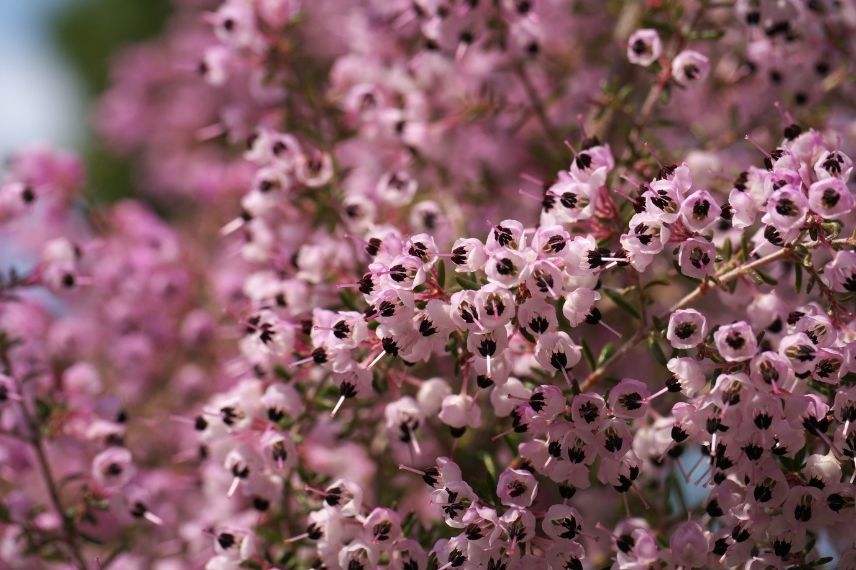
Erica canaliculata
- Subscribe!
- Contents
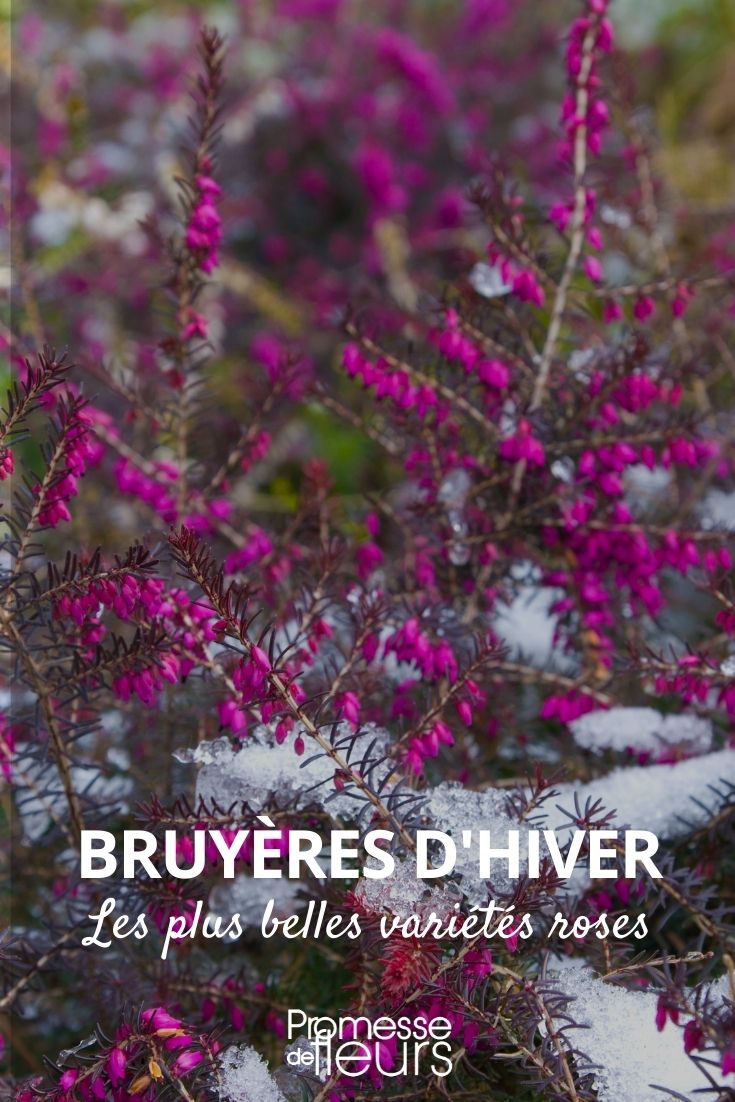































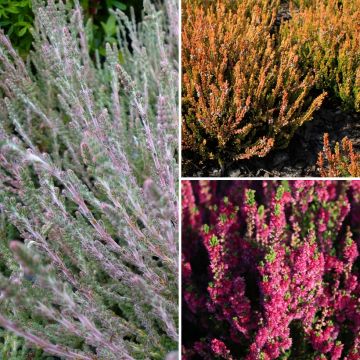
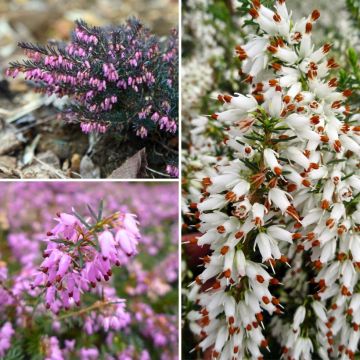



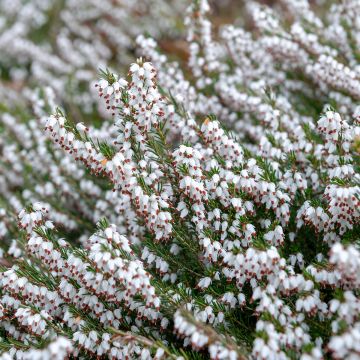

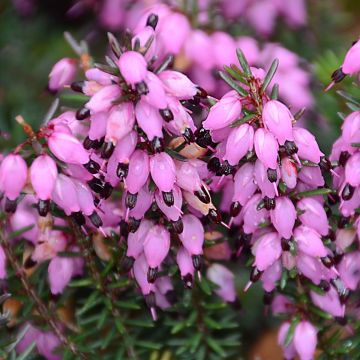
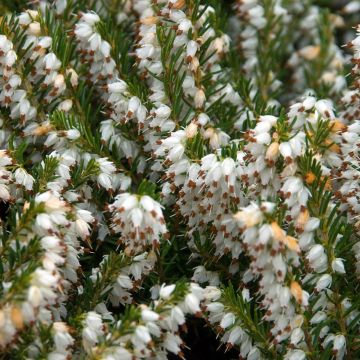
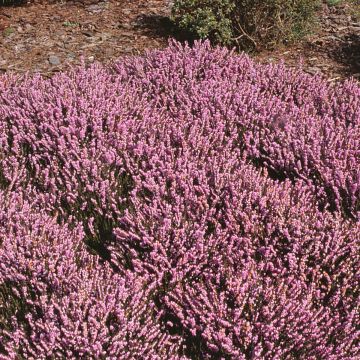
Comments